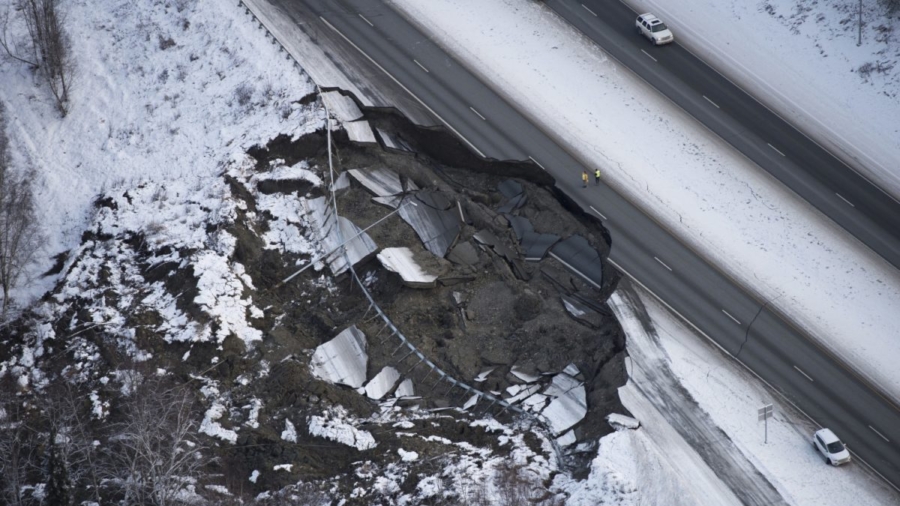The most powerful 4.1 aftershock since May shook Alaska’s Mat-Su region and was easily felt in Anchorage on Monday at around 10 a.m.
It was the largest aftershock since May after the 7.1 magnitude quake that struck last November, the Anchorage Daily News reported.
REVIEWED: Magnitude is 4.1, location is just south of Lake Marion and about 28 miles deep. Felt throughout Anchorage and Mat-Su.
This is the first aftershock of magnitude 4 or greater since May 18.
— Alaska Earthquake Center (@AKearthquake) August 5, 2019
And it’s not over yet: There are still many more expected during the next two years, according to seismologist Natalia Ruppert, but most of them will pass unnoticed.
According to the Alaska Earthquake Center, the seismic center was about 15 miles north of Joint Base Elmendorf-Richardson and around 28 miles deep.
Despite the epicenter being near Big Lake, it wasn’t reported until 30 minutes after the quake.
November’s Quake
Last year’s Nov. 30 quake hit at a depth of around 25 miles, the United States Geological Survey’s (USGS) Alaska Earthquake Center said.
Photos posted online show buckled roads and damaged buildings.

A series of aftershocks, with some as strong as 5.7 magnitude, hit the area after the initial quake, the USGS posted.
The quake hit just 8 miles north of the city, which has a population of nearly 300,000 people.
The quake also hit 2.4 miles northwest of Port MacKenzie, 12.2 miles east of Eagle River, and about 500 miles east of Whitehorse, according to the USGS.
The Alaska Earthquake Center in March revised the magnitude of the Nov. 30 earthquake to 7.1 from an earlier-declared 7.0.
Thousands Left Without Power After Quake
Alaskans outside the city of Anchorage also felt the effects of the powerful quakes. Pictures and videos showed severe damage to roads, with entire roadways collapsing and shifting.
Tsunami warnings were issued. Severe damage to several buildings, roads, and infrastructure was reported, but no casualties.
Former Alaska Gov. Sarah Palin said that her house was among those damaged.
Utility companies worked overnight to try to restore power to some 30,000 customers and fix hundreds of gas leaks.
“The leak orders are coming in by the minute,” Lindsay Hobson, a spokeswoman for Enstar, told the Anchorage Daily News. “We are working around the clock right now.”

About 40 people were working out in the field to fix the leaks.
Chugach Electric Association said the quake triggered about 21,000 outages for its customers but by the end of the day, crews had fixed all but 200. Anchorage Municipal Light and Power said it started at about 10,000 outages and had reduced that to about 1,000 by the end of the day.
Alaska seismologist Mike West said the earthquake was the most significant to strike Anchorage since the 1964 earthquake in the area.
“I’m not aware of large-scale building collapses, but I think it’s safe to say there are thousands of homes and businesses and buildings that were damaged in some fashion, be it a deck that slid downhill, a cracked foundation, a gas line disconnected from the house,” he told the Daily News. “What happened in Anchorage was an emotionally disturbing event.”
“Anyone who felt the strong shaking this morning has more of a reminder … than we will ever be able to put out as public service announcement,” he added.
Epoch Times reporters Zachary Stieber and Jack Phillips contributed to this report.


